Sightron is one of the few companies that sets out in very clear terms what the specifications for each scope are, but I understand that some specialized terms and maths may need some further clarification, so let's see them side by side:
BOTH scopes are "true" to the units their reticle is designed at 24X, and our analysis will be done at that magnification. Because BOTH scopes are Second Focal Plane (SFP), it is important to compare them at the same magnification.
The Mil-Hash scope has a click value of 0.05 mrads and the MOA scope has a click value of 1/8 MOA, so, how can we compare one and the other?
Remember that a milrad is 3.438 MOA's, so 0.05 mrads= 0.172 MOA's, while 1/8 MOA is 0.125 MOA
In essence, 1/20 mrad (or 0.05 mrad) is ABOUT 1/6th of an MOA, which is 37½% LARGER than 1/8 MOA
Some shooters think that they NEED the finest possible division of the complete turn to sight-in their rigs, but the reality is that in FT that is not so important:
1/8 MOA at 55 yards is 0.072" =((1.047" x 0.55)/8), or in other words, one click is less than one half a pellet diameter.
1/20 mrads at 55 yards is 0.099", or in other words, one click is a little more than one half a pellet diameter.
Not even the best target paper will resolve these differences, it will be one slightly enlarged hole. The slightest wind, the slightest difference in the pellets will present a much larger deviation.
To be perfectly clear: the current state of the art in pellets, rifles, barrels and shooters could not detect these differences. Many real good shooters shoot fantastic scores using scopes with ¼ MOA clicks (about a 0.177" pellet diameter at 55 yards).
Now, If each click is larger, does this mean that one turn will have a larger excursion?
Not necessarily.
Coming back to our scopes, we see that the Mil Hash scope has a total excursion of 2.5 mrads/rev. The MOA scope has 10 MOA's /rev. so, converting both to MOA, we get that the Mil Hash scope has a revolution with an excursion of 8.6 MOA's (= 2.5 x 3.438), while the MOA scope has a full 10 MOA's in a revolution.
This is one case where the finer division ALSO entails a larger excursion in the elevation of one revolution.
For those that click the elevation for each shot, and shoot under WFTF rules (12 ft-lbs maximum muzzle energy), it means that the MOA scope MAY accommodate their full trajectory from 9 to 55 yards in one revolution, but for the same trajectory, the Mil-Hash scope may not.
Does this mean that one scope is superior to the other? not necessarily, it all depends on how YOU shoot. YOUR habits, wants and needs.
Once you move past that point, the rest of the specs tell you that the scopes are almost identical with the exception being that the MOA scopes have caps that protect the turrets, while the Mil Hash scopes have open turrets.
Now, for those shooters that do NOT CLICK, OR for those that use the reticle to hold off for wind; understanding the reticle is vital.
Let's see the two reticles side by side:
The TOTAL side to side subtension of the whole reticles is marked in the diagrams as dimension "A".
For the case of the Mil Hash scope "A" is 10 milrads at 24X, for the MOA scope dimension "A" is 20 MOA's.
Converting the milrads to MOA, we get that the Mil-Hash scopes have a total subtension of 34.38 MOA's, while the MOA scopes have "only" 20.
The REAL problem for FT shooters comes not at 24X, because 20 MOA's of wind is quite a lot, BUT if shooters drive their scopes to 50X for ranging AND for shooting, then having 9.6 MOA's (=20 x 24/50) MAY not be enough.
Here again, the specific shooter wants and needs and habits creates a substantial difference between shooters using IDENTICAL EQUIPMENT.
Shooters that shoot at AROUND 33X +/- 3X (that means from 30 to 36X) will generally be able to use all the advantages of the MOA scopes, but shooters that shoot at 50X will NEED the Mil-Hash for holding into the wind, and that MAY entail having to use MORE than one revolution to accommodate ALL the trajectory.
Personally, I use my FT MOA-H scope (different reticle, but all the maths hold the same) at 29X, which is the magnification at which the "2 MOA" divisions actually become ½ mrads in reality. This allows me to check my ranging using stadia-ranging (or miling, or bracketing, same thing different name). And helps me in using my ballistics app (PP-Calc) with confidence.
Here is the lit MOA-H reticle in a Hector's Special Sightron 10-50X60 FT scope:
Hope this has made clear to most what are the real differences between the two models. EACH shooter must decide for himself what he can use best.
Good luck, keep well and shoot straight!
Héctor Medina
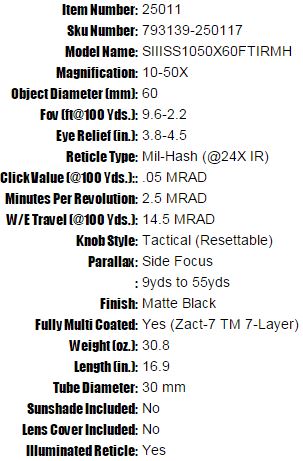
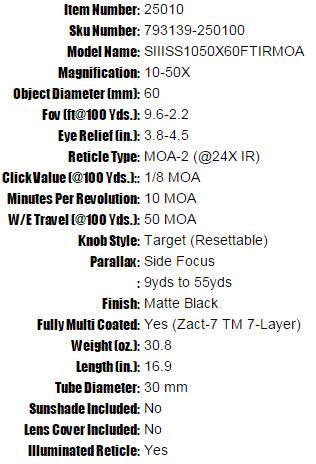
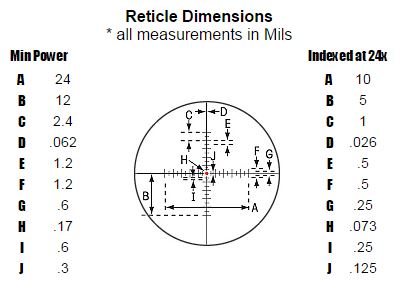
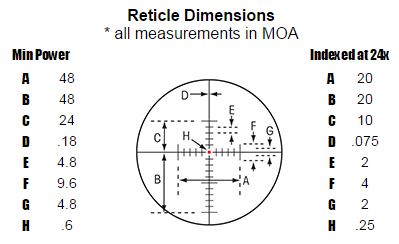
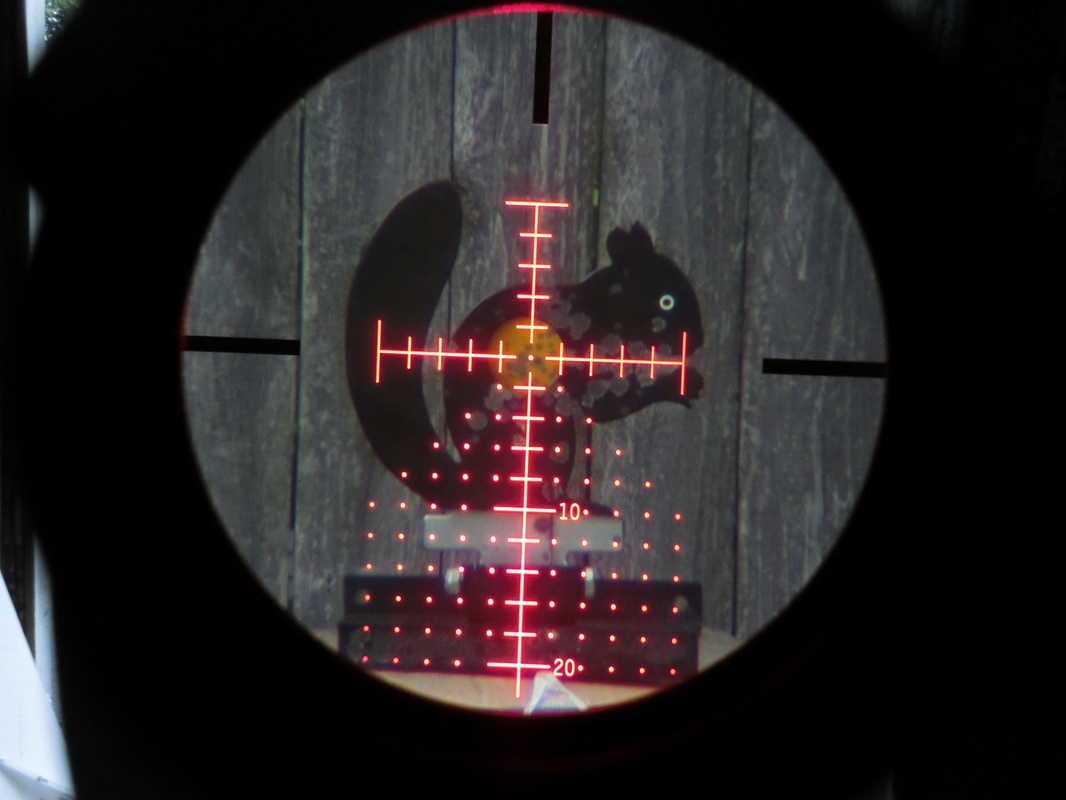
 RSS Feed
RSS Feed